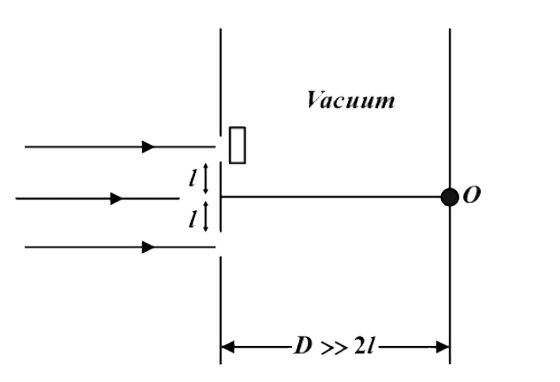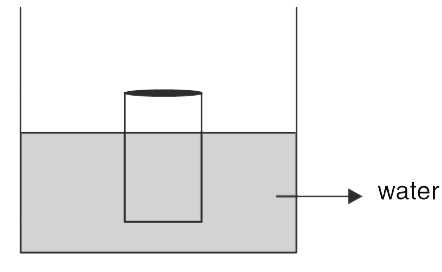The formation of oxide layer on metals follows first order kinetics and completely stops when the oxide thickness becomes 10 nm. If one hour after exposure of oxygen to metal surface the thickness is 7.5 nm, then what would be the thickness 120 minute after the exposure?
10 nm
5.25 nm
8.475 nm
9.375 nm
The correct Answer is:D
Topper's Solved these Questions
- CHEMICAL KINETICSBOOK - GRB PUBLICATIONCHAPTER - CHEMICAL KINETICSEXERCISE - F. Effect of Temperature and Catalyst
92 Videos
- CHEMICAL KINETICSBOOK - GRB PUBLICATIONCHAPTER - CHEMICAL KINETICSEXERCISE - Mechanism of Reactions
45 Videos
- CHEMICAL KINETICSBOOK - GRB PUBLICATIONCHAPTER - CHEMICAL KINETICSEXERCISE - D. Methods to Determine the Rate Law
28 Videos
- CHEMICAL BONDING-IBOOK - GRB PUBLICATIONCHAPTER - CHEMICAL BONDING-IEXERCISE - Subjective Type
120 Videos
- COORDINATION COMPOUNDSBOOK - GRB PUBLICATIONCHAPTER - COORDINATION COMPOUNDSEXERCISE - SBJECTIVE TYPE
98 Videos
Similar Questions
In young's double-slit experiment, both the slits produce equal intensities on a screen. A 100% transparent thin film of refractive index μ=1.5 is kept in front of one of the slits, due to which the intensity at the point O on the screen becomes 75% of its initial value. If the wavelength of monochromatic light is 720 nm, then what is the minimum thickness (in nm) of the film?

View SolutionThe simplest method of welding two pieces of metal together is known as pressure welding. The ends of metal are heated to a white heat-for iron, the welding temperature should be about 1300∘C-in a flame. At this temperature the metal becomes plastic. The ends are then pressed or hammered together, and the joint is smoothed off. Care must be taken to ensure that the surfaces are thoroughly clean first, for dirt will weaken the weld. Moreover, the heating of iron or steel to a high temperature cause oxidation, and a film of oxide is formed on the heated surfaces. For this reason, a flux is applied to the heated metal. At welding heat, the flux melts, and the oxide particles are dissolved in it together with any other impurities which may be present. The metal surfaces are pressed together, and the flux is squeezed out from the centre of the weld. A number of different types of weld may be used, but for fairly thick bars of metals, a vee-shaped weld should normally be employed. It is rather stronger than the ordinary but weld.
For fairly thick bars of metals
View Solution
Knowledge Check
On exposure to air, alkali metals get tranished due to formation of oxides, hydroxides and carbonates on their surface. When heated in air or oxygen they burn vigourously forming different types of oxides depending upon the nature of the metal. The formation and stability of these metals can be explained on the basis of size of alkali metal ion and the anion. Peroxides are colourless, while superoxides are coloured. The normal oxides are basic while peroxides and superoxides act as oxidising agents.
On heating in excess of oxygen, lithium givesALi2OBLiOCLi2O2DLiO3On exposure to air, alkali metals get tranished due to formation of oxides, hydroxides and carbonates on their surface. When heated in air or oxygen they burn vigourously forming different types of oxides depending upon the nature of the metal. The formation and stability of these metals can be explained on the basis of size of alkali metal ion and the anion. Peroxides are colourless, while superoxides are coloured. The normal oxides are basic while peroxides and superoxides act as oxidising agents.
On heating in excess of oxygen, potassium givesAK2OBKOCK2O2DKO2
The simplest method of welding two pieces of metal together is known as pressure welding. The ends of metal are heated to a white heat-for iron, the welding temperature should be about 1300∘C-in a flame. At this temperature the metal becomes plastic. The ends are then pressed or hammered together, and the joint is smoothed off. Care must be taken to ensure that the surfaces are thoroughly clean first, for dirt will weaken the weld. Moreover, the heating of iron or steel to a high temperature cause oxidation, and a film of oxide is formed on the heated surfaces. For this reason, a flux is applied to the heated metal. At welding heat, the flux melts, and the oxide particles are dissolved in it together with any other impurities which may be present. The metal surfaces are pressed together, and the flux is squeezed out from the centre of the weld. A number of different types of weld may be used, but for fairly thick bars of metals, a vee-shaped weld should normally be employed. It is rather stronger than the ordinary but weld.
Unless the surfaces are cleaned first
View SolutionThe simplest method of welding two pieces of metal together is known as pressure welding. The ends of metal are heated to a white heat-for iron, the welding temperature should be about 1300∘C-in a flame. At this temperature the metal becomes plastic. The ends are then pressed or hammered together, and the joint is smoothed off. Care must be taken to ensure that the surfaces are thoroughly clean first, for dirt will weaken the weld. Moreover, the heating of iron or steel to a high temperature cause oxidation, and a film of oxide is formed on the heated surfaces. For this reason, a flux is applied to the heated metal. At welding heat, the flux melts, and the oxide particles are dissolved in it together with any other impurities which may be present. The metal surfaces are pressed together, and the flux is squeezed out from the centre of the weld. A number of different types of weld may be used, but for fairly thick bars of metals, a vee-shaped weld should normally be employed. It is rather stronger than the ordinary but weld.
The flux is used to
View SolutionThe simplest method of welding two pieces of metal together is known as pressure welding. The ends of metal are heated to a white heat-for iron, the welding temperature should be about 1300∘C-in a flame. At this temperature the metal becomes plastic. The ends are then pressed or hammered together, and the joint is smoothed off. Care must be taken to ensure that the surfaces are thoroughly clean first, for dirt will weaken the weld. Moreover, the heating of iron or steel to a high temperature cause oxidation, and a film of oxide is formed on the heated surfaces. For this reason, a flux is applied to the heated metal. At welding heat, the flux melts, and the oxide particles are dissolved in it together with any other impurities which may be present. The metal surfaces are pressed together, and the flux is squeezed out from the centre of the weld. A number of different types of weld may be used, but for fairly thick bars of metals, a vee-shaped weld should normally be employed. It is rather stronger than the ordinary but weld.
When iron is heated to about 1300 degree centigrade
View SolutionThe simplest method of welding two pieces of metal together is known as pressure welding. The ends of metal are heated to a white heat-for iron, the welding temperature should be about 1300∘C-in a flame. At this temperature the metal becomes plastic. The ends are then pressed or hammered together, and the joint is smoothed off. Care must be taken to ensure that the surfaces are thoroughly clean first, for dirt will weaken the weld. Moreover, the heating of iron or steel to a high temperature cause oxidation, and a film of oxide is formed on the heated surfaces. For this reason, a flux is applied to the heated metal. At welding heat, the flux melts, and the oxide particles are dissolved in it together with any other impurities which may be present. The metal surfaces are pressed together, and the flux is squeezed out from the centre of the weld. A number of different types of weld may be used, but for fairly thick bars of metals, a vee-shaped weld should normally be employed. It is rather stronger than the ordinary but weld.
The simplest way of welding two pieces of metal together is
View SolutionA cyclindrical ice block is floating in water 10% of its total volume is outside water. Kerosene oil (relative density=0.8) is poured slowly on top of water in the container. Assume that the oil does not mix with water. Height of the ice cylinder is H.

(a) As kerosene is poured, how does the volume of ice block above the water level change?
(b) What is the thickness of kerosene layer above the water when 20% of the volume of the ice block is above the water surface?
(c) Find the ratio of voume of ice block is kerosene to its volume in water after the kerosene layer rises above the top surface of ice and the block gets completely submerged. Neglect any melting of ice.
View SolutionA metal slowly forms an oxide film which completely protects the metal when the film thickness is 3.956 thousand ths of an inch. If the film thickness is 1.281 thou. in 6 weeks, how much longer will it be before it is 2.481 thou? The rate of film formation follows first order kinetics.
View Solution
